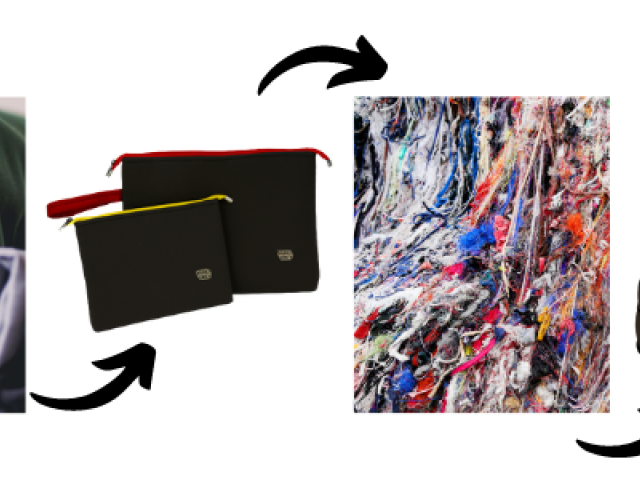How to solve the problem of redundant textile and create value?
- Back
- 19.01.2023
Slovaks annually "gain" themselves approximately 67,000 tons of new textiles (by shopping for new items), however almost 1/3 ends up in the landfill. Taking into account that almost 3,000 liters of water are used to produce one T-shirt, and up to 1.5 tons of carbon dioxide is produced when textile clothing is consumed, that makes of course a huge negative impact on our planet. However, the need for decreasing the negative impact of this production has been growing. The Slovak manufacturer WAKIVAKY proves that even textile production may have several benefits not only for saving environment.
WAKIVAKY works primarily with the unused textile and leather material, primarily from the automotive industry. As a result, we produce well designed and original products. By purchasing any products people can help reduce the number of negative impacts related to textile production
However, this process is not at all simple as it looks. What are the procedures behind:
- Collection of material,
- Material sorting,
- Custom design and product design,
- Own production of products.
How many original upcycled products can be made from 1 ton of unused material?
In figures - 1,350 pieces of notebook covers can be made from 1 ton of unused material.. We respect the principles of ZERO WASTE in the design of cuts and in the actual production of products, which means that we are concerned with the minimization of waste generated during production. Nevertheless, approximately 9% waste remains from the packaging manufacturing process. In other words - 1,350 new products are made by upcycling out of 1 ton unused material. At the same time, out of this almost 93 kg of textile still remains. What about that one?
We are happy to say that we see a solution by threading sustainably and with a minimal CO2e footprint. We collect and recycle textile scraps that remain during the manufacturing - we use the textile scraps as filling for HACHAI big bags. In this way, we are able to utilize all the material.
Of course this is the solution that saves the planet, however we believe that by this new approach that supports the circular economy and brings a range of benefits not only for the environment, but also for society and the market.
Thanks to the support of Norwegian grants, from 2021 we will be able to "rescue" an even greater amount of discarded materials and produce original, upcycled products from them.



 World Upcycling Day
World Upcycling Day
 World fair trade day
World fair trade day
 Be ready for legislative change.
Be ready for legislative change.